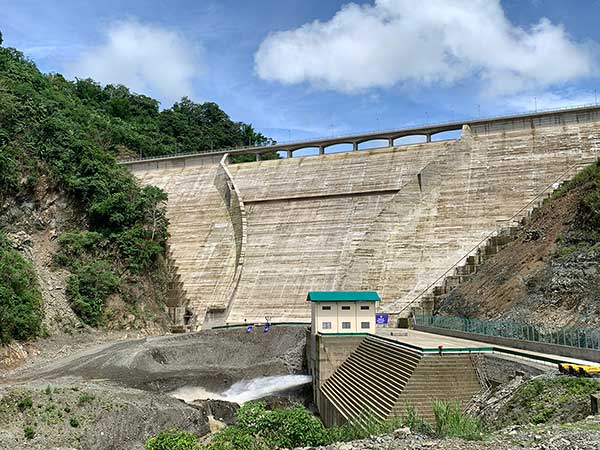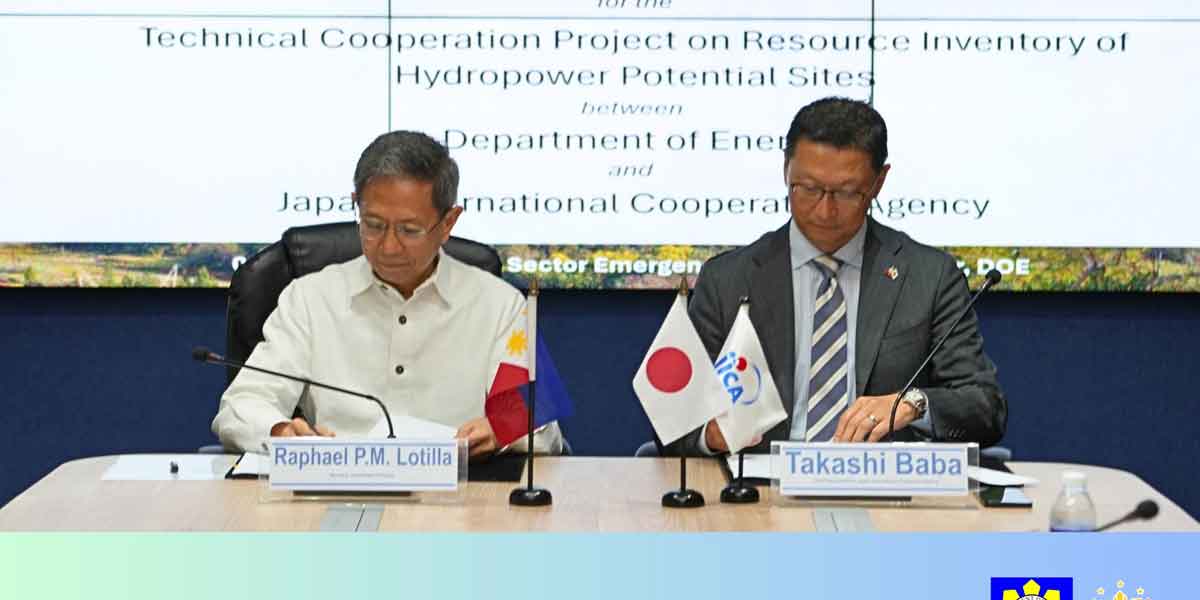
By Rjay Zuriaga Castor
President Ferdinand Marcos Jr. said the P19.7 billion Jalaur River Multi-Purpose Project Stage II (JRMP II) in Calinog, Iloilo, will set the standard for infrastructure projects under his administration.
“The JRMP II truly deserves its label: Katuwang sa Kauswagan or Partner in Progress. Let this project serve as a benchmark and an inspiration for all endeavors of this scale and magnitude,” Marcos said on Tuesday, July 16.
Marcos highlighted the three key components of JRMP II: irrigation development, environmental and watershed management, and institutional development. It is the first large-scale water reservoir outside Luzon.
The president led the inauguration of the P19.7 billion megadam, which included the opening of the floodgate and the unveiling of the marker of the 109-meter Jalaur High Dam. He was joined by Department of Agriculture Secretary Francisco Tiu-Laurel and National Irrigation Administration (NIA) Administrator Engr. Eduardo Eddie Guillen.
“[The dam will further boost] development in the agricultural sector as well as the local economy of the entire region,” he added.
According to NIA, the project is set to expand its irrigation service area by 9,500 hectares, covering rain-fed agricultural lands in 17 towns from the first to fourth district of the province, benefiting an estimated 7,000 farmers.
JRMP II will also augment irrigation water to five existing National Irrigation Systems, with a combined service area of 22,340 hectares and 18,000 farmer-beneficiaries.
With an adequate year-round supply of irrigation water, the project is expected to bolster rice production to an estimated 338,874 metric tons per year within NIA’s service area, a 71.54 percent increase from the current production of 197,545 metric tons.
Apart from irrigation and agri-based development, JRMP II will also generate other benefits such as 6.6 megawatts of hydroelectric power, bulk water supply, eco-cultural tourism, flood mitigation, and employment.
The bulk water component of the project will generate 86,400 cubic meters or 86 million liters of water per day, augmenting water demand in the province and city of Iloilo.
“This is only the beginning of what we have in store for the development of our water resources,” Marcos said.
In the past, the president noted, irrigation dams were built solely to water agricultural production areas, followed by flood control projects and investments in bulk water.
“In Bagong Pilipinas, we are strategically harnessing our finite resources, especially water. We are also wisely investing our limited funds in projects that would bring optimal development for the most beneficiaries in the most efficient manner,” he said.
“Our water development projects will not just bring irrigation or potable water to our people, but will also help address flooding, produce food, generate electricity, and develop tourism activities,” he added.
A ‘Game Changer’
Local officials and stakeholders touted JRMP II as a game changer for the country’s food security and economic development.
“This is a game changer for the people of Iloilo. It will contribute to our food security by increasing the production of palay,” said former Senate President Franklin Drilon. Drilon was instrumental in securing a P8.95 billion loan from the Export-Import Bank of Korea in 2012 for the project’s stage 2.
Drilon stressed that the boost in local rice production is expected to help lower the prices of basic commodities and reduce reliance on rice imports.
“We can help lower the prices of basic commodities because inflation is driven by the cost of rice, the staple food for our people. With this project, we can at least alleviate our difficulty in importing rice, which is necessary because our production is not enough,” he said.
Iloilo Governor Arthur Defensor Jr. also highlighted the critical role of JRMP II in making the province a major rice producer in the country.
“We want to gain the top spot. Several years ago, Iloilo was the number one rice-producing area, with Pototan as the number one rice-producing municipality. We want to regain that status,” he said.
“In more practical terms, our target in the province is 6 tons per hectare rice production. That is very modest,” he added.
South Korean Ambassador to the Philippines Lee Sang-hwa said the megadam is set to address critical challenges facing the Philippines, including food security, agricultural support, and climate resilience.
“Climate change and food security are problems besetting the whole world, and the Philippines is one of the countries most vulnerable to climate change,” he remarked.
As of June 2024, NIA reported that the overall physical accomplishment of JRMP II is at 75.51 percent, with the remaining civil works focused on constructing the high line canal and the main and lateral canals.
Earlier this May, water impounding commenced for the approximately 600-hectare reservoir in the high dam. By mid-July, the stored water at the reservoir had already reached its minimum operational level, according to NIA.





















